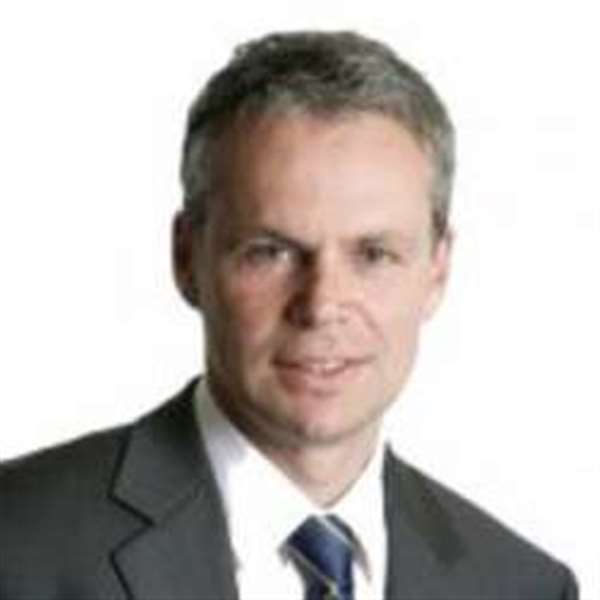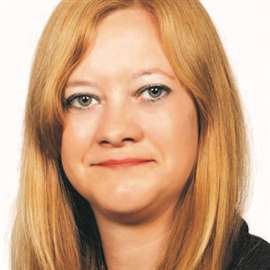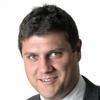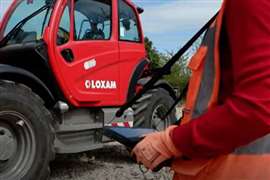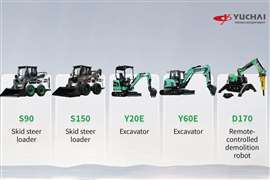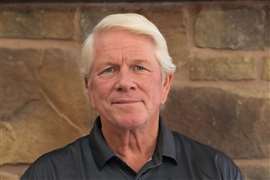The aerial platform market in sub-Saharan Africa
23 May 2022
Access International delves into the aerial platform market in Sub-Saharan Africa through the eyes of three rental and distribution companies that between them operate out of South Africa and the Indian ocean island of Réunion.
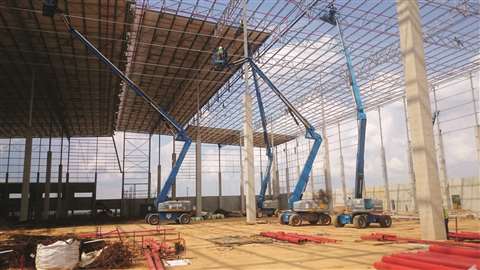 Genie booms work on steel erection. (Photo: Genie)
Genie booms work on steel erection. (Photo: Genie)
Part 1 - Aerial platform rental market
As one might imagine the access and rental sector varies greatly across the Sub-Saharan region, with the main rule being that South Africa has a buoyant and growing access market, while most other territories are far less mature, and in some cases almost non-existent.
Goscor Access Solutions (GAS) operates a diverse fleet of over 1,000 machines across Southern Africa, which are predominantly MEWPs with working heights from 6m-57m, along with telehandlers and spider cranes.
In addition to rental the company is a distributor for Genie, ATN, Teupen, Holland Lift, Unic, Pramac and Snorkel’s telehandler range.
Through its dedicated branches and shared locations with sister companies Concord Cranes and scaffolding and formwork specialist UniSpan, Goscor’s footprint extends throughout Southern Africa while its new equipment sales expands further north to include parts of Central and Western Africa.
The total number of access machines in South Africa’s rental fleets is estimated to be 4,000 units, says Marcus Gartside, national sales manager at Goscor Access Solutions, while in neighbouring countries the number is far smaller.
Equipment market challenges
“In these regions equipment is more commonly owned by the end users themselves due to a lack of rental equipment being available.
“The South African market has experienced an upward yet erratic growth pattern,” says Gartside, “dependant on economic and market conditions which can be volatile in the region.”
Challenges in the market include volatile exchange rates against the US dollar and Euro, increasing the imported cost of equipment.
“Coupled with this is the increasing shipping costs globally which have quadrupled from the east and doubled out of Europe in the past year,” explains Gartside.
In addition, adequate technical support and availability of parts can be challenging, especially given the geographical distance from OEMs and potential lead times. Thus, GAS carries a vast range of parts for all equipment in its rental fleet.
Infrastructure spending in South Africa
Opportunities in South Africa, on the other hand, include the government’s increased spend on infrastructure projects and local investment by international companies building warehouse distribution facilities in major centres.
As Gartside explains the South African market tends to lag behind more developed access regions such as Europe in terms of adoption of newer technologies and niche products.
However GAS has established itself as being first to market with a range of equipment, including Xtra Capacity (XC) and Fuel-Electric (FE) hybrid boom lifts from Genie and it has the largest diesel and electric scissor lifts in Africa, those being 27m and 22m Holland Lift scissors.
It also has the highest spider lift, a 36m Teupen and the range of Unic spider cranes.
Historically, South African aerial platforms have been used predominantly in construction, mining and heavy industrial work, on longer term rental projects.
“In these sectors we have seen a rise in demand for bigger machines, in construction especially as new warehouses continue to increase in height from where they were a few years ago,” says Gartside.
In recent years the benefits of using MEWPs has been recognised in other areas, such as warehousing and logistics, general maintenance and cleaning, signage and retail, among others. These are, for the most part, shorter rental periods.
Added to this, stricter regulation around the use of ladders and scaffolding in South Africa primarily has opened the door for access equipment rentals into those sectors.
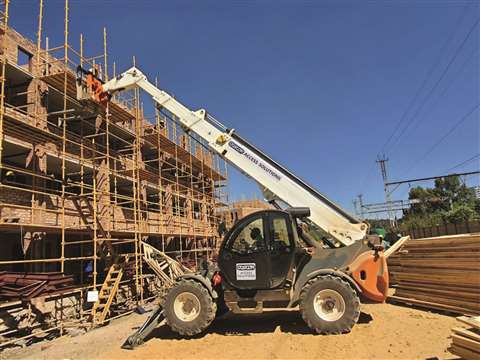 A telehandler takes on construction work.
A telehandler takes on construction work.
In the future, the same organic growth can be expected in other parts of Africa, says Gartside, however in the more developed markets, like South Africa, growth may be slower than in previous years as rental companies carefully monitor utilisation rates and returns, not wanting to over capitalize.
But that is for the future; the greater African market has not really changed over previous years, says Gartside.
“With a lack of regulation regarding health and safety protocols in many regions, the cost of investing in an aerial platform is still not seen as a viable alternative to traditional methods of working at height.
“We do expect higher growth as these markets move to aerial platforms as a safer and more productive alternative.
“However, initial cost is an important factor and the capital outlay can be prohibitive for clients, especially when purchasing multiple machines.”
Business opportunities in Africa
As a result, Gartside says, “We see various suppliers from other continents offering cheap or used machines in our market, however the African client is fast becoming wise to the benefits of dealing with companies who have a base in the continent, their best interests at heart, and the systems in place to offer them the ongoing support they need.”
Additionally, many larger projects across Africa are undertaken by international contractors from outside these regions which insist on the use of safer equipment.
Opportunity outside South Africa lie in the major projects, such as the Bugesera Airport in Rwanda and gas projects in Mozambique, Uganda and Tanzania. GAS has supplied equipment to such projects, for example the Mohembo Bridge in Botswana.
Outside of South Africa, where regulations vary and may or may not be strictly enforced, GAS offers training and encourages adherence to the same policies it applies.
“Ours is a unique market in many ways with numerous challenges,” Gartside concludes, “Yet there are many opportunities at the same time. However, in order to operate successfully in Africa one must be agile; we continually adapt not only our offerings, but also our operations to meet the changes in the market and demands of our valued clientele.”
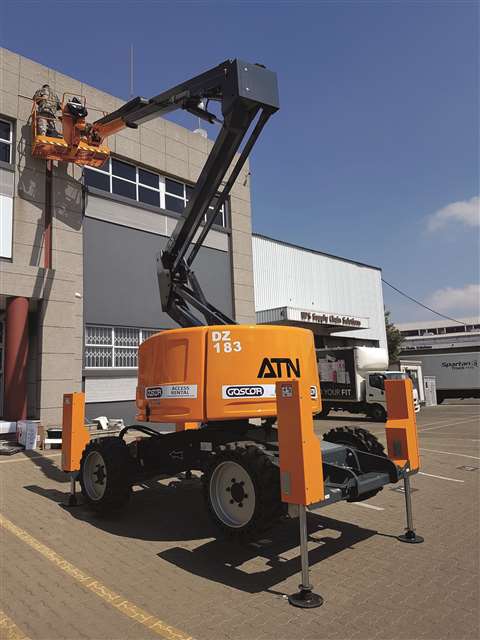 A boom lift from French manufacturer ATN. (Photo: ATN)
A boom lift from French manufacturer ATN. (Photo: ATN)
Part 2 - MEWP distribution in Africa
After spending more than 25 years in rentals of cranes and access equipment, over the last two years Hi-Reach Manlift is focussing on distribution of new machines and more specifically the Snorkel brand of MEWPs.
The company covers most of the Sub Saharan area, including South Africa, Botswana, Namibia, Mozambique, Zambia, Zimbabwe, Angola, DRC, Swaziland, Lesotho, Malawi and even Mauritius.
Hi-Reach is still a relatively new entrant in the market with its Snorkel range, although it has represented Genie, Teupen, ATN and Hy-Brid Lifts for many years.
George Landsberg, the managing director of Hi-Reach, believes there are about 6,000 units in total operating in South Africa, and he foresees a further growth of between 5% - 10% per year over the next five years.
In other countries, the story is very different. “The mining industry in a few countries, such as Zambia, the Democratic Republic of the Congo (DRC), Namibia and Botswana have some machines working quite effectively but nowhere near to the level in South Africa.
“We also do not see a lot of development in the construction and industrial markets in these countries for the foreseeable future.”
Types of aerial platforms available in South Africa
On the subject of product types, Landsberg says South Africa has not been accepting of niche products, such as spiders, or low level access, despite Hi-Reach’s best efforts at promoting them.
“There are quite a few spiders from brands such as Teupen, ATN, JLG and a few Easylifts. But this has not been anywhere near to what it could have been in terms of market penetration.”
However, Landsberg does believe the South African market has matured and, apart from the niche products, fleet mixes are fairly similar to those found in the US and Europe, having grown at a rate of around 10% per year over the last 20 years.
“I can see no reason why it will not continue this growth phase, despite the sluggish economic situation in South Africa.”
A major difference is that there are much fewer access rental players in the market.
Apart from the two major companies with 1,000 plus machines each, including Goscor and Eazi Access, there are a couple more with around 200 units, while all the other access rental companies have less than 100 machines each.
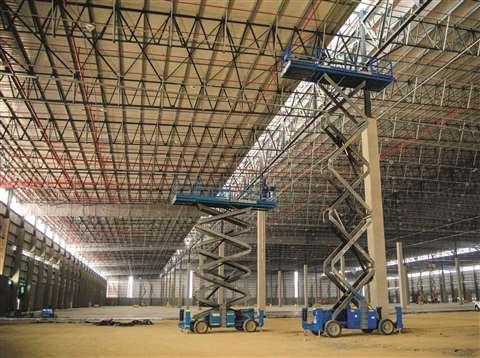 Warehouse construction in South Africa.
Warehouse construction in South Africa.
And the future could see a divergence from the typical European rental mix.
“With the power problems experienced in South Africa due to major problems at the state-owned power supplier, Eskom, we do not see the same move towards battery-powered machines as elsewhere.”
Mining application should continue to expand, however. “The current situation in that industry is quite good. That not only goes for South Africa but for all the surrounding countries as well, such as Zambia, Botswana, DRC and Namibia.”
Equipment safety and training legislation
The training of MEWP operators in South Africa is highly legislated although the practical implementation leaves much to be desired with the appropriate bodies not functioning properly.
“As a result, the Institute for Work at Height (IWH) was formed to organise and coordinate the activities of the work at height industry, especially as far as training is concerned,” addes Goscor.
To unlock real growth outside of South Africa there needs to be a legitimate focus on safety and a determined effort to police the work at height industry better, says Landsberg.
“A legitimate focus by governments on the general economic climate in the region will also be a factor to unlock real growth.”
Access equipment in the African islands
Headquartered in Réunion Island, LCM is a family-owned business founded in 1972, specialising in sales, maintenance and rental of construction and agricultural products, including Manitou equipment.
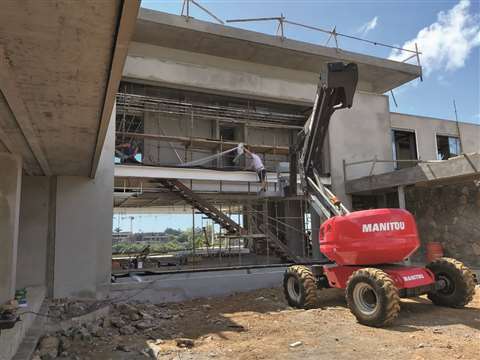 One of LCM’s Manitou boom lifts on a construction project. (Photo: LCM)
One of LCM’s Manitou boom lifts on a construction project. (Photo: LCM)
As the group’s managing director Aurelien Potier explains, the company has over 2,000 units across its 11 branches in the Indian Ocean; Madagascar, Mauritius, Réunion Island, Mayotte and Comoros Islands. Half of it is rented in Réunion and the rest shared between the other countries.
LCM invests around €7millions in its rental fleet every year. Being small islands these markets lack logistics services, therefore many companies are investing in warehousing, making this the main growth area for indoor aerial equipment. “The main business in the future will be for infrastructure and warehousing - that requires access equipment,” says Potier.
LCM’s markets are also very competitive with Chinese brands. “The main challenge will be to maintain the sales of well known premium brands as different players, mainly from Asia step-in.
“The second challenge is the delivery delay from factories which sometimes goes up to 18 months.”
Reunion and Mayotte are ruled under European Norms, so business is regulated by accredited bodies and qualified training for operators.
“We are trying to establish the same standards in Mauritius and Madagascar. This is for us a way to differentiate ourselves from the competitors.”
Potier adds, “Since Covid, the way we do business has changed and the Ukraine war is not helping. Equipment and freight prices are escalating and we have a fluctuating exchange market.
“It makes for very long delivery times, while the client needs to pay about 30%-40% more.”
STAY CONNECTED



Receive the information you need when you need it through our world-leading magazines, newsletters and daily briefings.
CONNECT WITH THE TEAM
